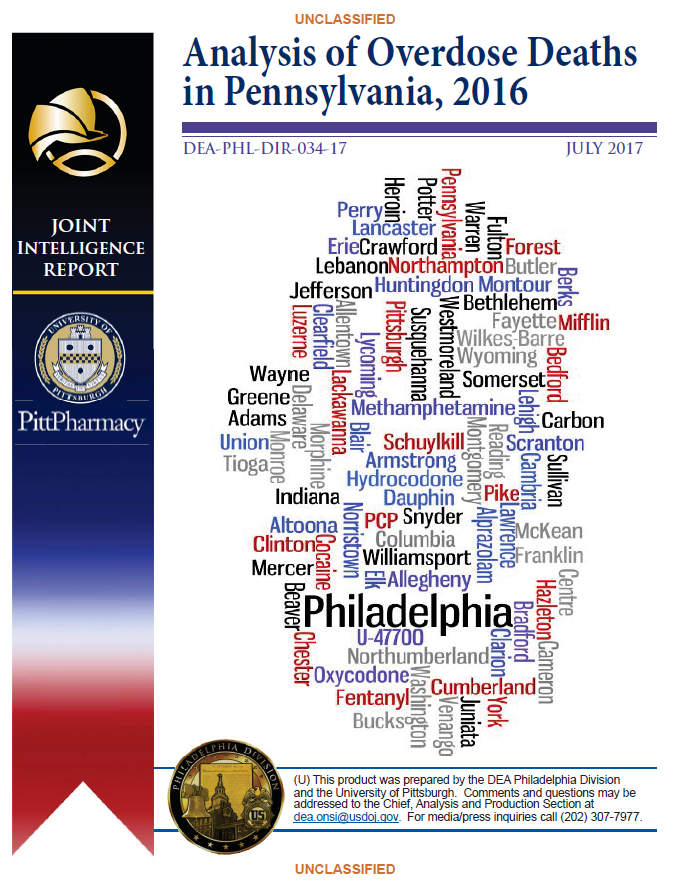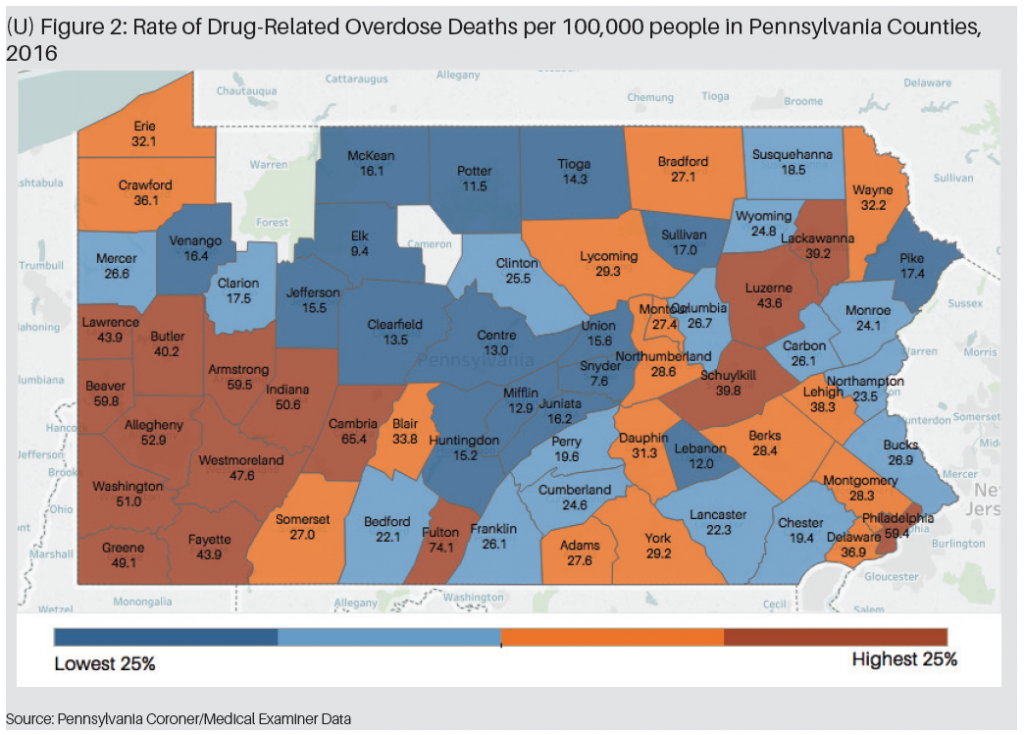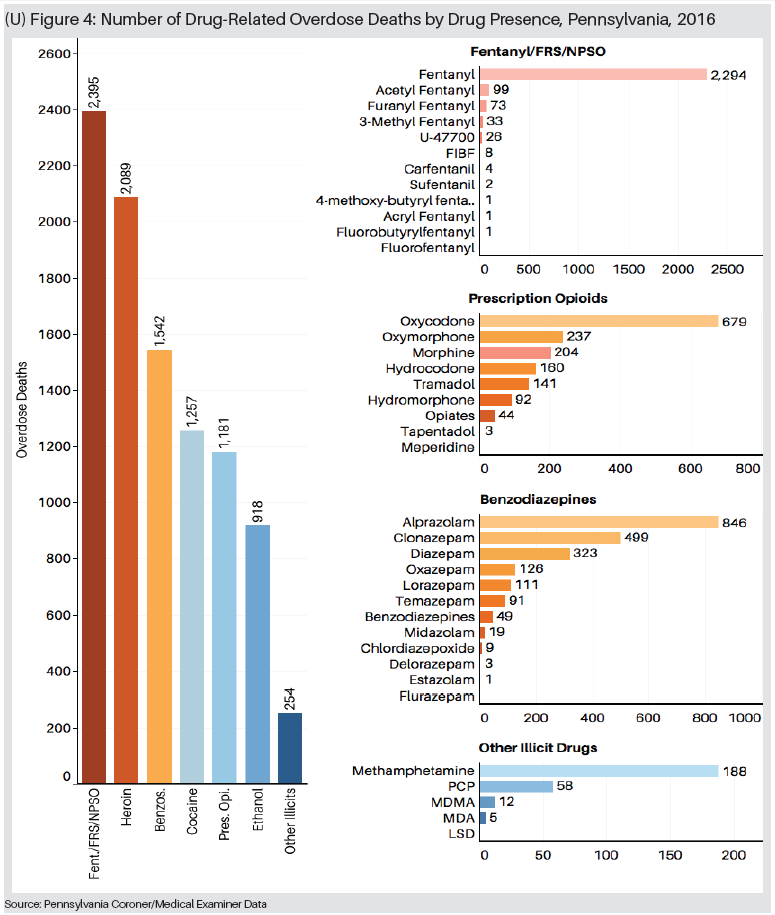The Commonwealth of Pennsylvania is in the midst of an unprecedented epidemic of drug abuse and drug-related overdose deaths impacting every corner of the state and all of its residents. In 2016, more than 4,600 Pennsylvanians died as a result of drug abuse, with thousands more affected by addiction, either personally, or through family, friends, and loved ones.
The analysis of drug-related overdose death data plays a pivotal role in law enforcement’s efforts to identify and combat drug suppliers, and ultimately drug abuse and related overdoses. At the most basic level, the drugs that contribute to death are an indicator of drug availability in the user market. Analysis of this data also highlights geographic patterns of abuse and identifies at-risk populations, and when coupled with drug treatment statistics, law enforcement drug seizure data, and public health indicators, allows for multi-disciplinary data-driven decisions regarding resource placement and strategic initiatives.
…
In 2016, 4,642 drug-related overdose deaths were reported by Pennsylvania coroners and medical examiners, an increase of 37 percentii from 2015. In 2016, approximately 13 people died of a drug-related overdose each day.
The Pennsylvania drug-related overdose death rate in 2016 was 36.5 per 100,000 people, an increase from 26.7iii per 100,000 people in 2015. The national drug overdose death rate in 2015 was 16.3 per 100,000. The presence of an opioid, illicit or prescribed by a doctor, was identified in 85 percent of drug-related overdose deaths in Pennsylvania in 2016.
Fentanyl and fentanyl–related substances (FRS) were the most frequently identified in decedents (52 percent of deaths), a significant increase from 2015 when fentanyl/FRS were noted in 27 percent of deaths. More than 95 percent of counties reporting drug-related overdose deaths in 2016 indicated the presence of fentanyl/FRS.
Heroin was the second most frequently identified substance in decedents (45 percent of deaths), followed by benzodiazepines (33 percent of deaths), cocaine (27 percent of deaths), and prescription opioids (25 percent of deaths). Of counties reporting drug-related overdose deaths in 2016, 95 percent showed the presence of heroin.
In 2016, individuals aged 15-24 saw a 380 percent increase in the presence of fentanyl in toxicology reports compared to other age groups. Conversely, individuals in the 25-34 age group experienced a 970 percent increase in instances of heroin present in toxicology reports compared to other age groups.
The percent increase in drug-related overdose deaths between 2015 and 2016 was larger in rural counties (42 percent) compared to urban counties (34 percent). In 2016, 70 percent of drug-related overdose decedents were male, consistent with 2015, but not consistent with the population distribution across Pennsylvania. Males were more likely to die from a fentanyl and/or heroin overdose compared to females. Females were more likely to have alprazolam, clonazepam, and/or oxycodone present in overdose deaths, while males were more likely to have fentanyl, heroin, cocaine, and/or ethanol present in overdose deaths.
In 2016, 77 percent of decedents were White, 12 percent were Black, 4 percent were Hispanic, and 7 percent were identified as Other, consistent with 2015 and the population distribution across Pennsylvania. Finally, the continued lack of standardized and centralized reporting of drug-related overdose death data in Pennsylvania inhibits timely analysis necessary for stakeholders to drive decision-making. Efforts must continue amongst the myriad data collectors to streamline compilation and develop a common mechanism for information sharing that serves the public interest.
…



